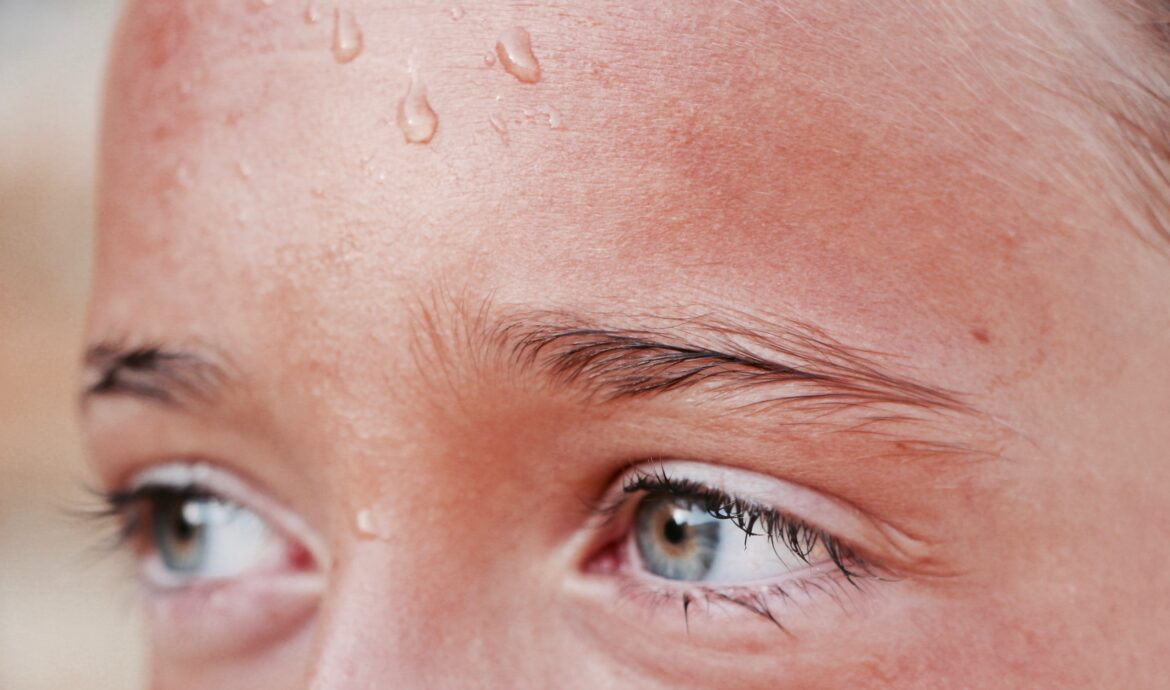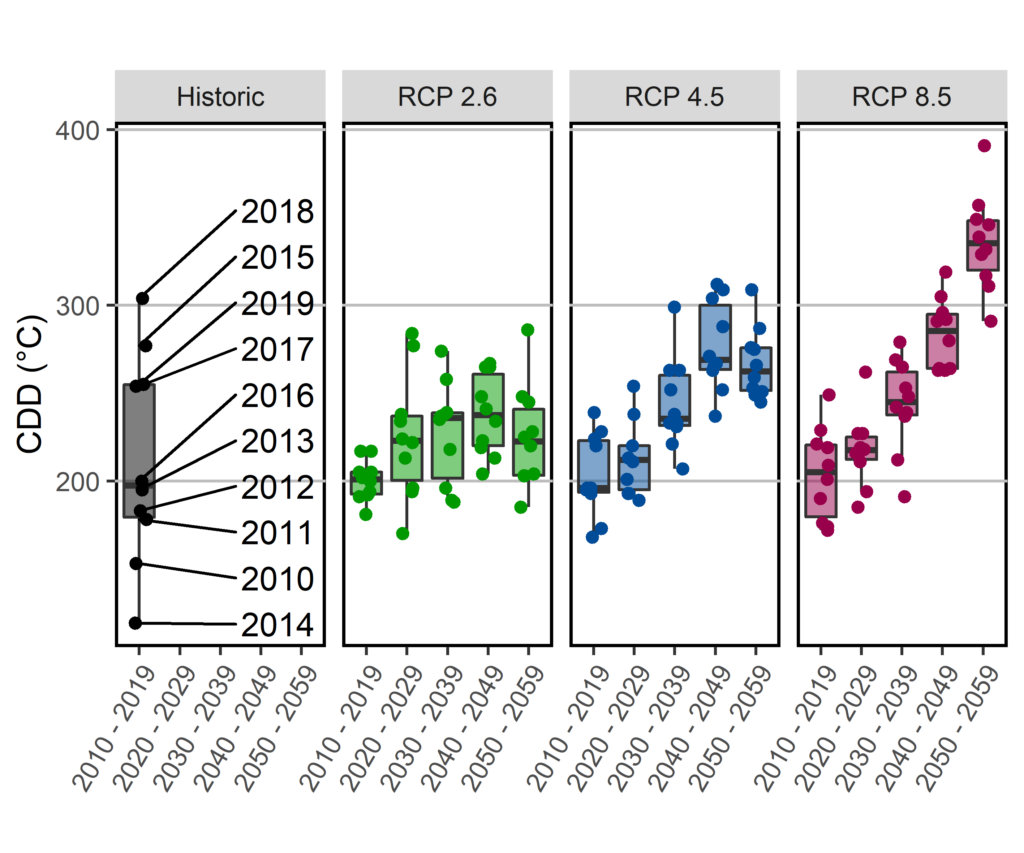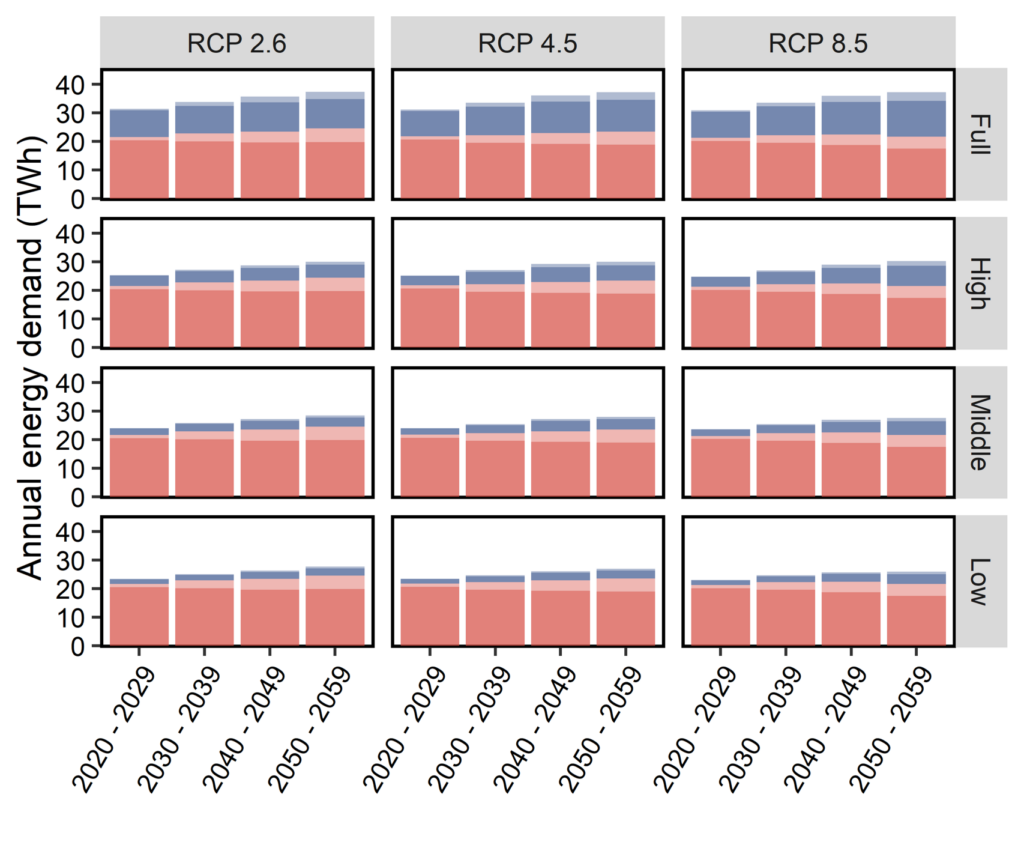
Keeping it cool in Switzerland: The critical impact of air-conditioning uptake
On 11.05.2021 by Robin Mutschler, Philipp Heer, Sven Eggimann, Martin RuedisueliBy Robin Mutschler, Philipp Heer, Martin Rüdisüli and Sven Eggimann




Robin Mutschler, Philipp Heer, Martin Rüdisüli and Sven Eggimann are a team of researchers from the Urban Energy Systems Laboratory at the Swiss Federal Laboratories for Materials Science and Technology (Empa) in Dübendorf. They are researching future proof sustainable urban energy infrastructure and how to best transform buildings to be more sustainable and more resilient to climate change.
Today, only a minority of Swiss households have air conditioners installed for cooling. This might change due to the warming climate and the growing integration of heat pumps to new buildings, which can be used for heating and cooling. The Swiss cooling energy demand may reach a similar order of magnitude compared to the heating demand by mid-century onwards, which could have a significant impact on the energy system.
Average yearly Swiss mean temperatures are rising due to climate change. The same holds true for climate indicators such as Cooling Degree Days (Figure 1), which measure the number of hours in which the ambient temperature is above a threshold temperature at which a building requires cooling to keep the indoor temperature comfortable. Therefore, rising temperatures can lead to a significant increase in cooling devices in buildings. This directly leads to an increase in building energy demand. Here, we discuss how future cooling demand depends on climate change, population growth, and crucially, how many people will install air-conditioning technologies.

Figure 1: Based on the CH2018 climate models, the future expected number of Cooling Degree Days (CDD) is plotted in relation to the measured historic values for the 2010-2019 period. On average, the number of CDD could double by 2050, which could lead to a drastic increase in households installing an air-conditioning system in their homes. RCP stands for “Representative Concentration Pathway” and is a measure by how many Watt per square meter the incident irradiation will increase due to climate change (Figure source: Mutschler et al. 2021).
Simulating future cooling demands
To better understand the relationship between these energy demand drivers, we analysed the historical heating and cooling demands of the building demonstrator NEST at Empa Dübendorf and projected them to the future with different climate scenarios. In detail, the heating and cooling energy demands were correlated to the ambient temperature and then extrapolated via aggregated and population-weighted climate models. We find that for an extreme scenario, where all of Switzerland relies on air-conditioning, Switzerland could require comparable amounts of energy for cooling as heating by mid-century onwards. (Figure 2). In numbers, this corresponds to approximately 20 TWh for heating and 17.5 TWh for cooling. In a more moderate simulation scenario, Switzerland would still require around 5 TWh of cooling energy by 2050. If this cooling demand was supplied by heat pumps for which we can assume a coefficient of performance (cop) of two to three for cooling, the cooling demand of 5 TWh would translate to an electricity demand of around 2 TWh, which corresponds to one large thermal or hydropower plant (1 GW output) converting energy for 2000 h (a standardized year has 8760h). The current Swiss electricity demand is at around 60 TWh per year. Therefore, the demand for cooling energy supplied via heat pumps would correspond to 3-4% of the current overall Swiss electricity demand.

Figure 2: Total projected annual demand for heating (red) and cooling (blue) energy in TWh as a function of time, climate scenarios (RCP), cooling device uptake (Low-Full) and population growth (10.4 million by 2050). The influence of population growth is indicated with the lighter blue and red colour. (Figure sources: Mutschler et al. 2021)
The impact of air-conditioning
Currently, only a small fraction of Swiss households have installed dedicated cooling devices. However, the number of heat pumps with the main purpose of heating could also be used for cooling up to a certain extent. We estimate that the total number of cooling devices could increase to over 50% based on the CDD development. This could have a significant impact on the energy system due to significant demand peaks during hot summer days. Fortunately, the cooling demand is high when there is also high generation from photovoltaic cells which could facilitate the supply of cooling energy on hot summer days.
The way forward
We find that depending on the climate scenario, the simulated uptake of cooling devices could vary between a few percentages to over 50%. Air-conditioning uptake also predominates other effects such as population increase. Faced with climate change, we suggest that the focus on building architecture has to be not only on optimizing heat losses, but also on minimizing heat gains in summer. This could be achieved by constructing buildings having less window or glazed areas, building orientation considerations or passive cooling strategies such as night cooling or window shading. Furthermore, policymakers should not wait for cooling demand to significantly increase. Instead, they should investigate how to best satisfy increasing cooling demands while minimizing the impact on the (decarbonized) future energy system. Recent initiatives in Switzerland relying on lake water for district cooling or climate-adapted city planning are such promising examples showing the way forward (see the example of “Wärme-/Kälteverbund Circulago“, in German only, or how the city of Zurich is active in this regards, in German only).
Cover photo: Hans Reniers/Unsplash
Publication Information
This blog article is based on the open-access publication entitled:
Benchmarking cooling and heating energy demands considering climate change, population growth and cooling device uptake
Authors: Robin Mutschler, Martin Rüdisüli, Philipp Heer, Sven Eggimann
Author affiliation: Urban Energy Systems Laboratory, Swiss Federal Laboratories for Materials Science and Technology, Empa, 8600 Dübendorf, Switzerland
Keep up with the Energy Blog @ ETH Zurich on Twitter @eth_energy_blog.
Suggested citation: Mutschler, Robin, Heer, Philipp, Rüdisüli, Martin, Eggimann, Sven “Keeping it cool in Switzerland: The critical impact of air-conditioning uptake”, Energy Blog @ ETH Zurich, ETH Zurich, May 11, 2021, https://blogt.ethz.ch/energy/keeping-it-cool/
If you are part of ETH Zurich, we invite you to contribute with your findings and your opinions to make this space a dynamic and relevant outlet for energy insights and debates. Find out how you can contribute and contact the editorial team here to pitch an article idea!

If Switzerland really moves to an electricity/energy system dominated by only two sources, water and sun, then cooling during hot summer days should not be a problem because more than 50% of all electricity will come from solar energy and the sun will provide electricity exactly when it is needed.
But honestly, I doubt that more than 50% electricity from solar energy is realistic in Switzerland, because that would mean that every house would have to be covered with solar panels. Not a single country in the world currently has such solar coverage.
A great explanation blog, I was searching for such kind & thanks to you for sharing about it. I will check out your other blogs as well.